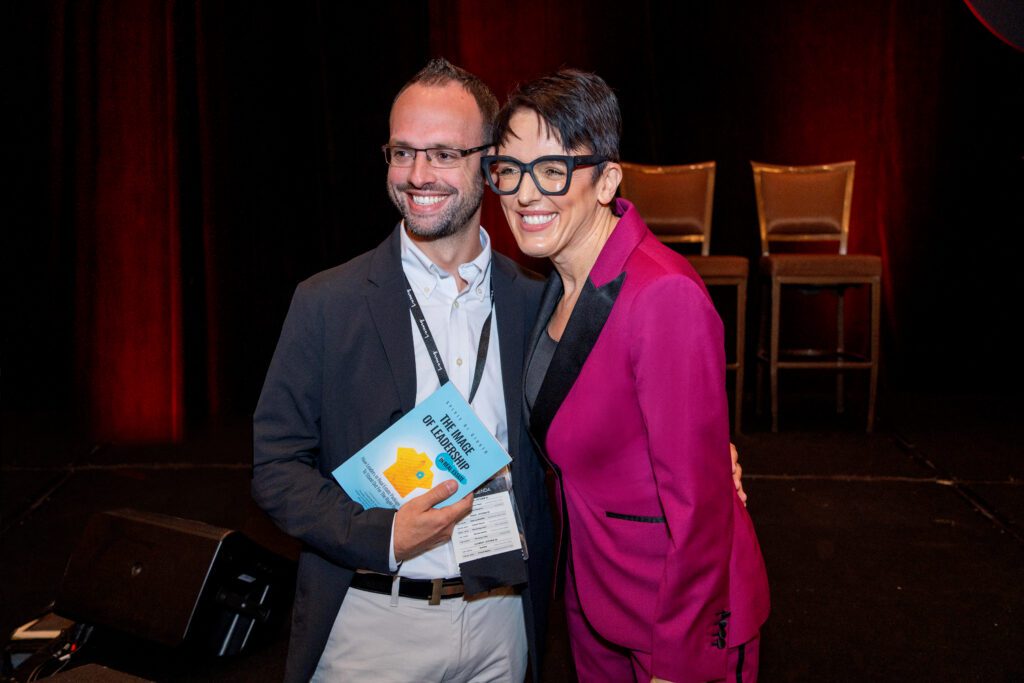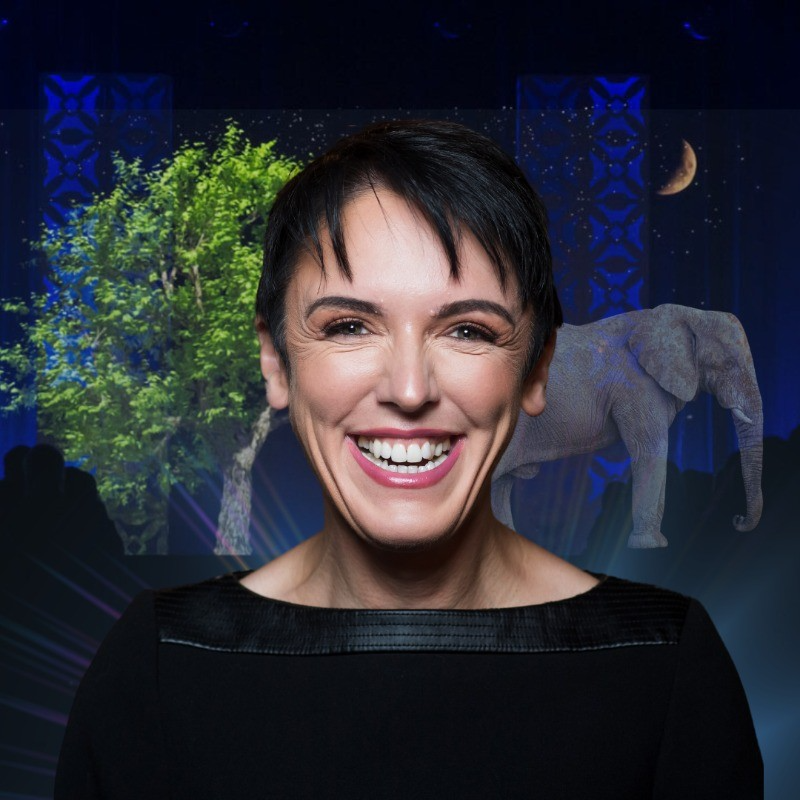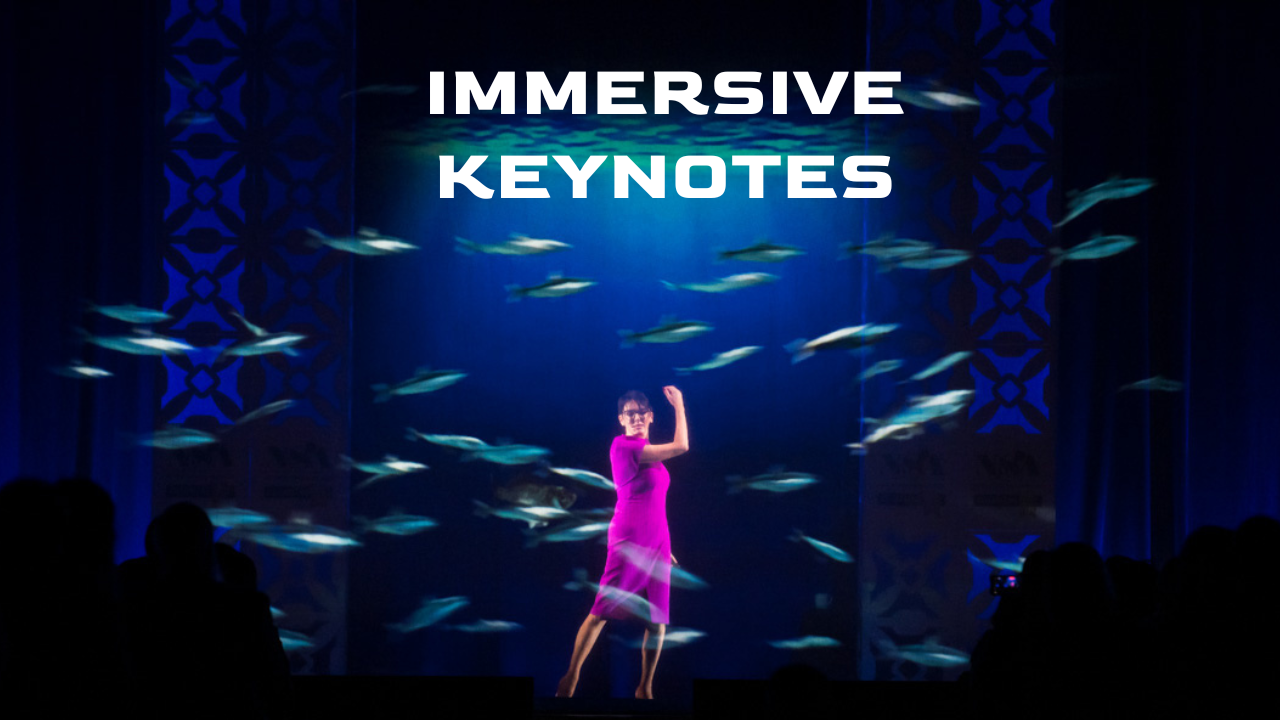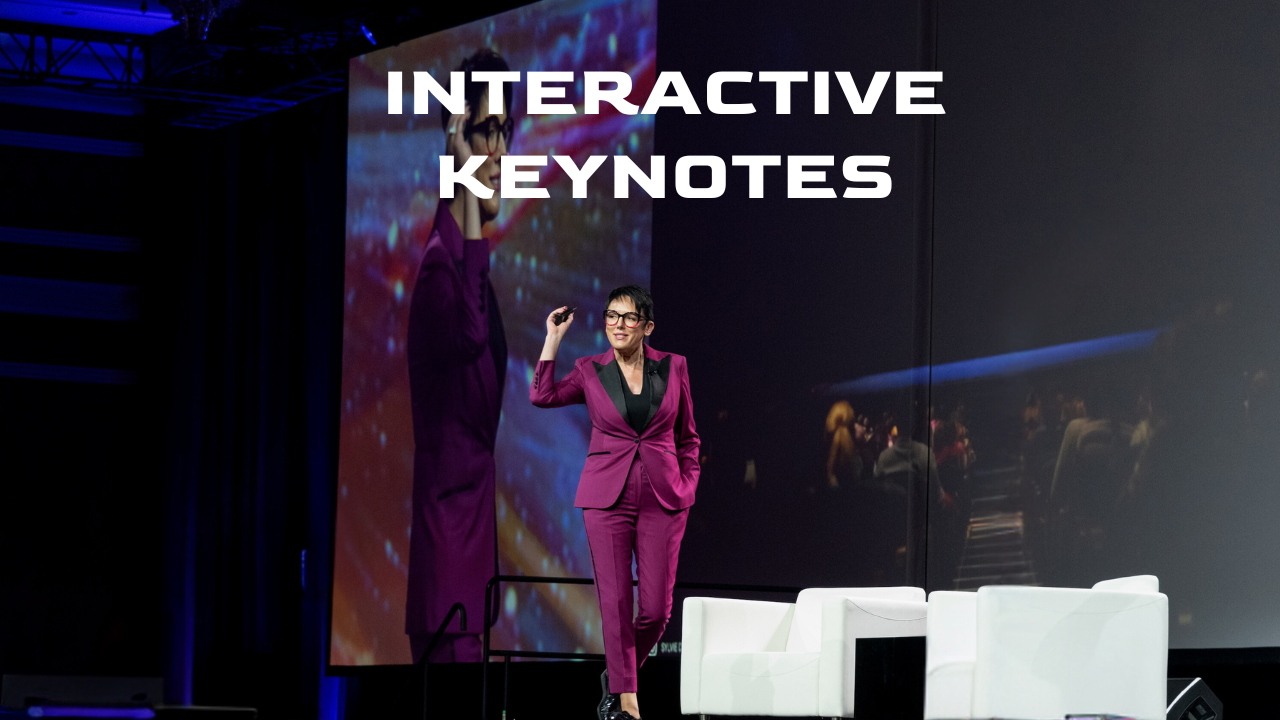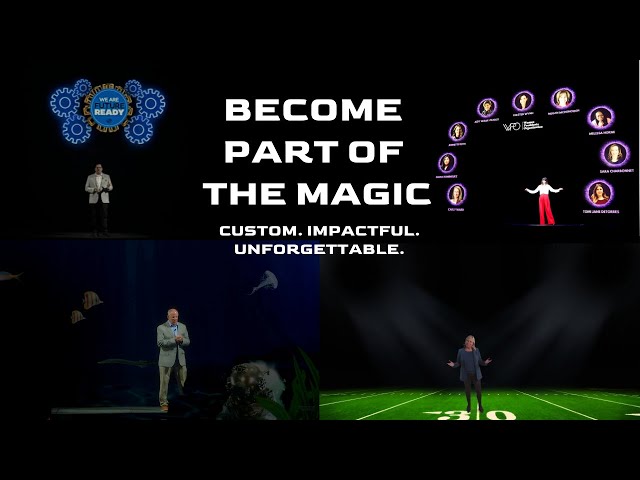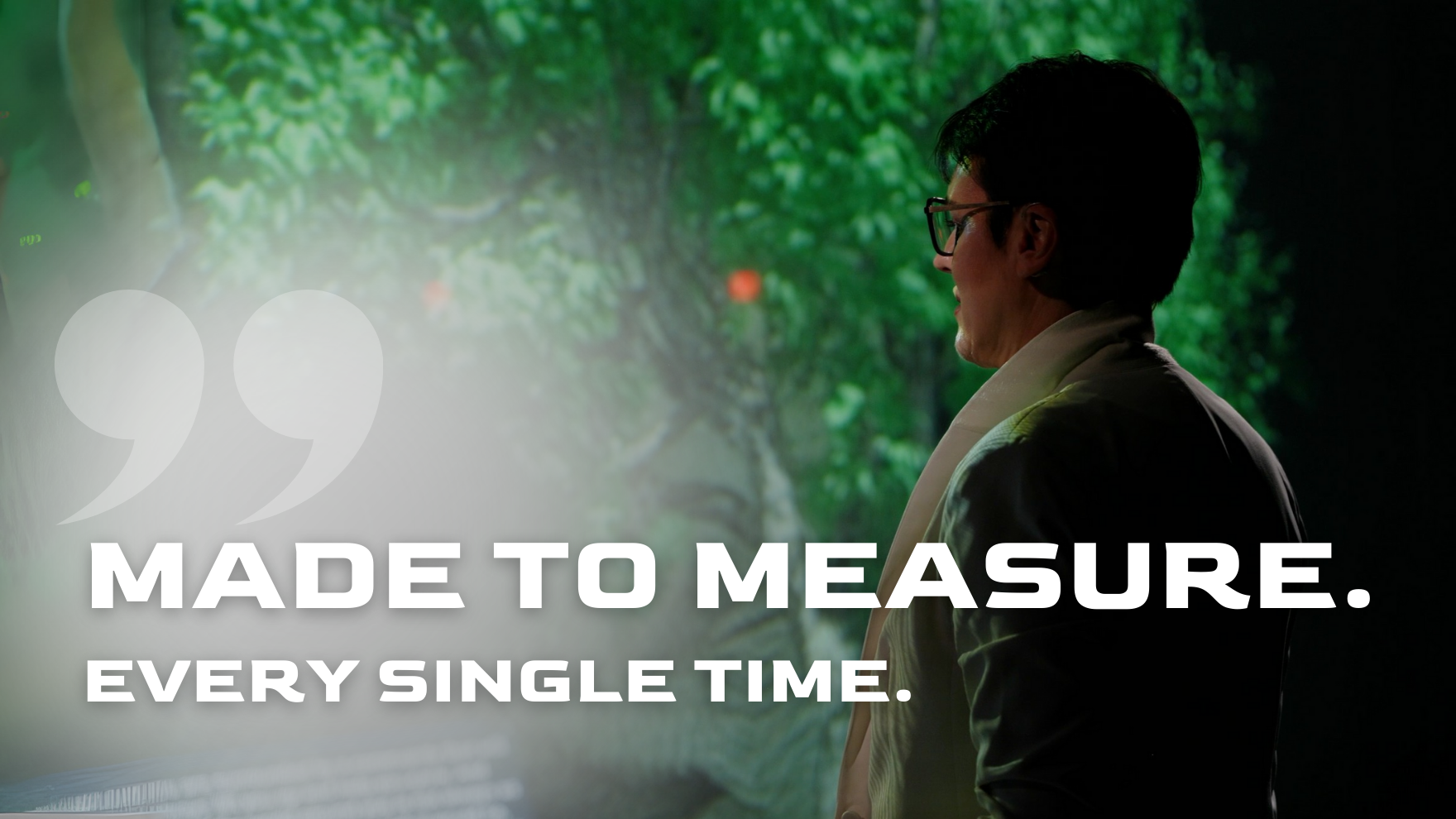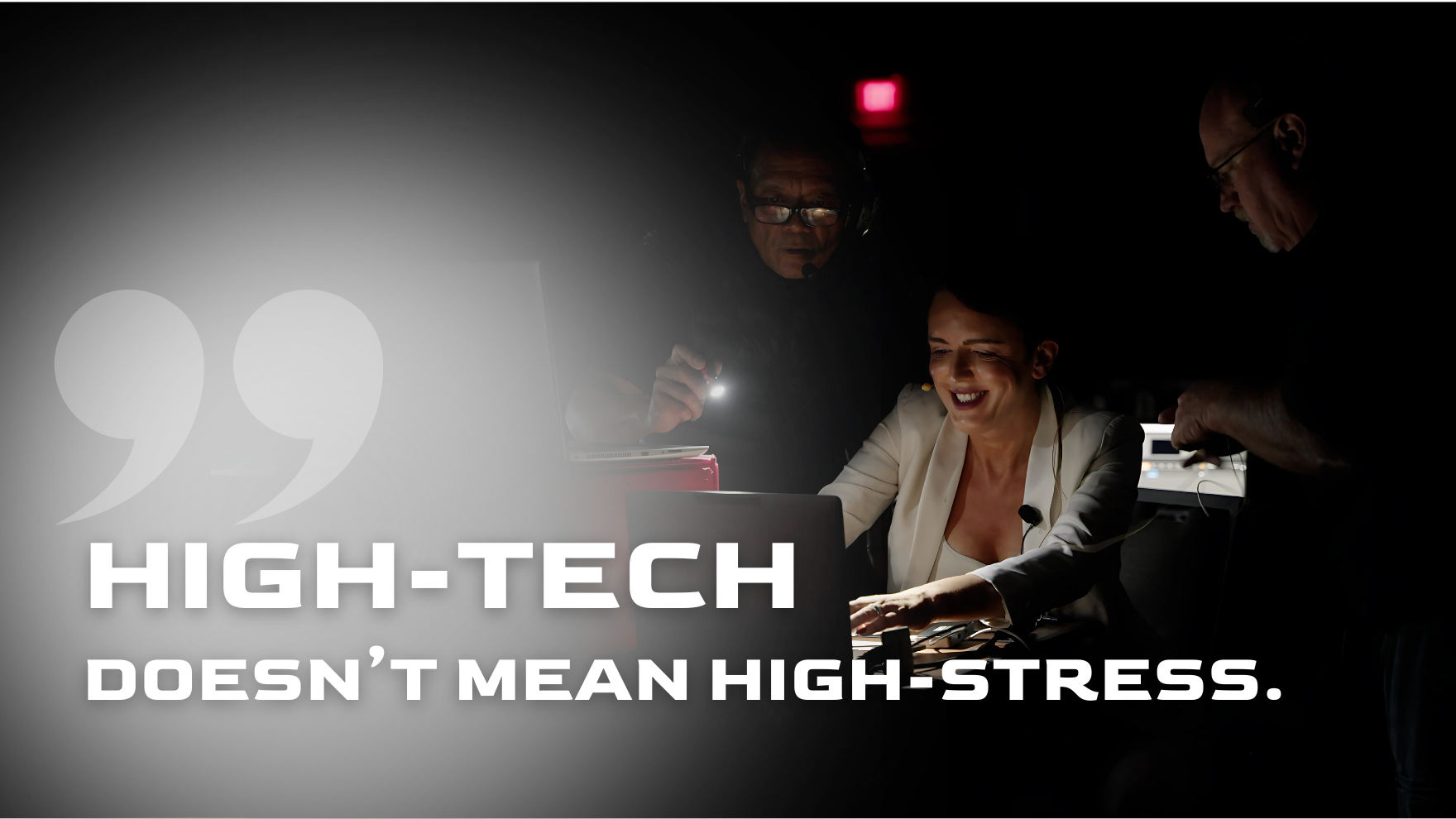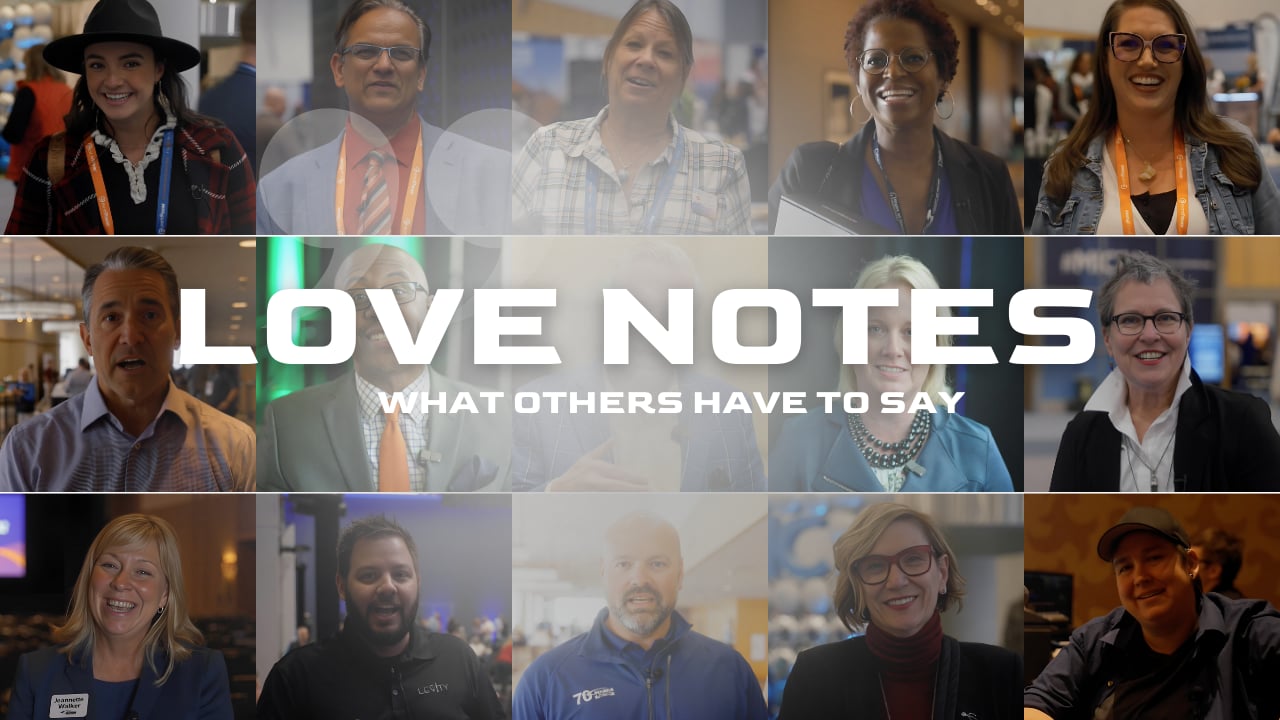Will Your Audience Engagement Stand the Test of Time?
Before my life as a keynote speaker, I spent years in the corporate world—specifically in retail and tourism. I was lucky to work with a C-suite team that believed leadership wasn’t about sitting in a glass office. They made sure we regularly stepped onto the front lines, experiencing the business the way our employees and customers did. I spent days as a cashier, worked shifts in fulfillment centers, and shadowed customer service teams handling real-time challenges.
And that lesson never left me. Today, I apply the same approach to speaking. I don’t just stand on stages; I sit in audiences. I watch, I learn, and I experience what it’s like to be on the receiving end of a keynote. And what I’ve learned is simple: being an audience member is the hardest job in the room. Audience engagement is not automatic—it’s earned. They’ve already had a long day. They’re checking their emails. They’re thinking about what’s next. They’re fighting off distractions, exhaustion, and, let’s be honest—sometimes, they’re just waiting for the coffee break. Keeping them engaged isn’t just about speaking well—it’s about deeply understanding what they need from you in that moment.
So how do you create audience engagement that ensures your time on stage is not just tolerated but truly valued?
Key Takeaways
- Your audience’s time is the most valuable currency—if you waste it, you’ve lost them before you’ve even begun.
- Engagement doesn’t start when you step on stage; it starts the moment your name appears on the event agenda.
- Attention isn’t given freely—it’s earned, sustained, and reinforced through experience, emotion, and connection.
- The best speakers don’t just talk—they create a shared moment where the audience sees themselves reflected in the message.
- Technology should enhance human connection, not replace it; no app can replicate the impact of an engaged, present speaker.
- Energy is contagious—the way you show up determines whether your audience leans in or tunes out.
- A keynote’s real impact isn’t measured by applause, but by the actions and conversations it sparks long after the event.
- If your audience engagement strategy doesn’t extend beyond the stage, you’re missing the most important part—lasting influence.
The Responsibility and Privilege of the Platform
I don’t have a TV in my home. Not for any particular reason—it just never got set up, and at some point, I realized I didn’t miss it. So when I do watch something, it’s a very intentional decision. One evening, I made the choice to watch a movie. Within minutes, I had a feeling I had picked the wrong one. After 15 minutes, I was certain it was a bad film. After 30 minutes, I knew my time was being wasted. Yet, I kept watching.
Have you ever done this? Stuck with a bad movie just because you’ve already invested time? When it was over, I was so frustrated. Ninety minutes of my life—gone. Ninety minutes I could never get back. Ninety minutes that could have been spent on something meaningful, productive, or even just enjoyable.
Ever since, when I walk on stage, I remind myself of that movie. Because as a keynote speaker, I am stealing time from my audience. If I’m speaking to 1,000 attendees for 45 minutes, that’s 45,000 minutes of human life—time they’ll never get back. It’s my responsibility to make sure that every single one of those minutes matters. And at the heart of that responsibility? Audience engagement. If they are bored, distracted, or disengaged, I am wasting not just their time, but their opportunity to learn, to grow, and to be inspired.
The stage is a privilege, not a right. Your audience owes you nothing—but you owe them everything.
The Psychology of Attention: Why Most Keynotes Lose the Room in 10 Minutes
The average attention span is shrinking, but that doesn’t mean audience engagement is impossible—it just means you need to work smarter. Neuroscience tells us that the human brain craves novelty, storytelling, and emotional connection. If you’re delivering a keynote filled with facts and bullet points, you’re fighting an uphill battle.
Great keynote speakers don’t just deliver content—they design experiences. They anticipate when their audience is likely to drift and build intentional engagement moments to pull them back in. This could mean a well-placed story, a shift in delivery, or an unexpected moment that re-engages attention. The rhythm of a keynote matters just as much as the content itself. Knowing when to pause, when to surprise, and when to invite participation can mean the difference between passive listeners and an audience that is fully present and engaged.
I call this “changing the temperature” in the room. One keynote speaker who masters this art is Mark Scharenbroich, in my humble opinion, probably the greatest keynote speaker of all time. One moment you find yourself in tears over the deep self-reflection he just brought you into, only to have him lift you back up with one of the funniest lines you’ve ever heard. He guides you through an emotional rollercoaster—effortlessly shifting from introspection to laughter, from depth to delight. And he does all of this without fancy technology, forced polling, or gimmicks. Just pure mastery of human connection. That’s the real magic of audience engagement—moving people in a way that sticks with them long after they’ve left the room.
People don’t disengage because they don’t care; they disengage because you haven’t given them a reason to.
The Myth of a Passive Audience: Why Engagement Starts Before You Step on Stage
Many keynote speakers assume audience engagement begins the moment they step onto the stage—but that’s a mistake. Audience engagement starts long before the event, in the way you position your message, in how the event organizer introduces you, and in how you prime the audience’s expectations. The most successful keynote speakers think beyond their performance and ensure their message is woven into the audience’s journey from the very first touchpoint—whether that’s the event website, pre-event emails, or even how they support the event organizers on their own social media platforms. Every detail matters in setting the stage for true connection.
So long before stepping on stage, ask yourself: How can I help the event organizers create a sense of anticipation and connection before I even begin? What pre-event touchpoints can I contribute to that build excitement and set the stage for meaningful engagement? How can I provide insights or resources in advance that prepare the audience to fully connect with my message?
Keynotes don’t start with a mic check; they start the moment the audience first hears your name.
From Spectators to Co-Creators: How to Make Your Audience Part of the Experience
Gone are the days when audience members just sat and listened passively. Today, they expect interaction. They don’t just want to be talked to; they want to be talked with. They crave a sense of involvement, a role in shaping the conversation rather than merely absorbing information.
Engagement skyrockets when an audience feels like co-creators of the experience. The more they see themselves as part of the keynote, the more invested they become in the message—and the more likely they are to retain and act on it.
Live problem-solving: Present a real challenge relevant to the audience and work through solutions together.
Role reversals: Invite attendees to take on different perspectives by switching roles in a discussion or case study.
Interactive storytelling: Get the audience involved in shaping a story as it unfolds.
Crowdsourced content: Have attendees contribute their insights to shape part of the presentation.
Gamification elements: Introduce fun, competitive elements like live polls, trivia, or challenges.
Visual exercises: Use visual props, drawings, or interactive whiteboards to involve the audience.
Collaborative creation: Build something together, whether it’s a shared idea, a strategy, or a collective takeaway.
Surprise and delight: Break patterns with unexpected, meaningful moments that keep the audience curious and engaged.
When you master the art of audience engagement, you don’t just hold attention—you transform it. A truly engaged audience doesn’t just listen; they internalize, reflect, and take action. The greatest keynote speakers don’t measure their impact by applause or feedback forms but by the long-term influence of their message. Because in the end, audience engagement isn’t about how well you performed—it’s about how deeply your message resonated and lived on beyond the room.
If your audience could have had the same experience by watching a video of you, then you missed the magic of live engagement.
Technology vs. Connection: Does Interactive Tech Boost or Kill Engagement?
The rise of polling apps, QR codes, AI-generated audience insights, and real-time digital interactions has given keynote speakers more tools than ever before. On the surface, these features seem to amplify audience engagement—offering instant feedback, gamification, and new ways to involve attendees. However, the reality isn’t always so simple.
Just because an audience is clicking buttons or scanning QR codes doesn’t mean they’re deeply engaged. In fact, technology can often serve as a crutch—something keynote speakers rely on instead of fostering genuine human connection. When used poorly, interactive tech can create distance rather than draw people in.
That being said, when technology is integrated intentionally, it can be a game-changer. Imagine an audience submitting real-world challenges anonymously before a session, allowing the speaker to tailor insights in real-time. Or an AI-driven sentiment analysis tool subtly guiding the keynote speaker to adjust their approach based on audience reactions. In these cases, tech doesn’t replace engagement—it enhances it by making the experience more dynamic, personalized, and responsive.
I’ve had the privilege of pioneering one of the most technologically advanced keynote experiences in the industry—my 3D immersive presentations. This cutting-edge format allows me to bring concepts to life in a way that captivates audiences like never before, blending visual storytelling with futuristic innovation. But from day one, my priority has never been the technology itself—it has always been the audience experience. I’ve been intentional about ensuring that my 3D experience enhances audience engagement rather than becoming a distraction. It’s not about dazzling people with holograms or digital effects for the sake of spectacle—it’s about using innovation to deepen understanding, spark curiosity, and create a more memorable and impactful learning experience. Because, at its core, no level of technological sophistication can replace what truly matters: the human connection between speaker and audience.
In the end, technology should serve the audience, not the other way around. The most powerful keynotes don’t hinge on interactive slides or audience polling—they hinge on storytelling, emotion, and human connection. And no app in the world can replicate that.
If technology doesn’t deepen the conversation, it’s just a distraction disguised as innovation.
Why Your Energy Is Contagious: How Speakers Transfer Engagement to an Entire Room
Audience engagement isn’t just about what you say—it’s about what you radiate. Before you even utter your first word on stage, your energy has already set the tone. Walk in with hesitation, low enthusiasm, or a disconnected presence, and your audience will mirror that right back to you. But step onto that stage fully engaged, fully present, and fully alive, and you’ll ignite a completely different response.
That’s because energy is contagious. Whether you realize it or not, your audience picks up on everything—from your posture to your tone, from your expressions to the conviction in your voice. And just like in any human interaction, they’ll take their cue from you.
This isn’t just motivational speaker talk—there’s science behind it. Humans are wired to respond to emotional contagion—the psychological phenomenon where people unconsciously mirror the emotions and energy of those around them. We know that when one person in a room exudes enthusiasm, confidence, and positivity, others instinctively start to match that frequency. The same goes for nervousness, disengagement, or monotony.
As a keynote speaker, you are the emotional thermostat of the room. The audience will regulate themselves to match your energy—so if you want audience engagement, you need to embody it first.
But here’s the truth: audiences don’t need a hyped-up, overly animated performance. They need you to be fully engaged in what you’re saying. Forced enthusiasm can feel just as off-putting as low energy. The key is authentic energy—one that aligns with your personality, your message, and the moment.
Ever been in a room where the speaker was so genuinely invested in their message that you felt compelled to lean in? That’s the kind of audience engagement that lingers. It’s not about being the loudest, the flashiest, or the most high-energy person in the room—it’s about being the most present, the most attuned, and the most connected to the audience in front of you.
Authenticity beats theatrics every time. Forced enthusiasm is just as repelling as low energy.
Beyond the Keynote: How to Extend Audience Engagement Long After You Leave the Stage
A great keynote doesn’t end when the speaker steps off the stage—it should continue to spark conversations, inspire action, and influence thinking long after the event is over. True audience engagement isn’t just about what happens during your talk; it’s about what lingers after. The best speakers don’t just aim for applause; they aim for impact.
So how do you ensure your message sticks? How do you create engagement that outlives your time on stage?
- Leave the audience with a challenge or actionable next step: A speech without a takeaway is like a book without an ending. People need something tangible to walk away with—a challenge, a question to reflect on, or an action they can implement immediately. Make it clear how they can apply what they’ve just learned. If they don’t take action, they’ll forget.
- Make it easy for attendees to stay connected: Extend the conversation beyond the stage by giving your audience ways to stay in touch. This could be through a downloadable resource or worksheet related to your keynote, a QR code leading to additional insights or an online discussion, a newsletter signup for those who want to dive deeper into your content, or Social media platforms where they can continue engaging with your ideas. The more frictionless the follow-up, the more likely they are to stay engaged.
- Collaborate with event organizers on follow-up content: Your role as a keynote speaker isn’t just about the 45 minutes on stage—it’s about helping the event create lasting impact. Work with organizers to provide post-event content (e.g., a short video recap, a LinkedIn post summarizing key insights) or offer to answer audience questions in a follow-up email or online forum. The more touchpoints you create, the stronger your message’s staying power.
- Encourage attendees to share and reflect on what they learned: The best engagement isn’t just between speaker and audience—it’s between audience members. Encourage reflection and discussion by asking attendees to share one key takeaway with a colleague, post about their favorite insight from the event on social media, or apply a specific strategy from your keynote and report back on results. When people articulate what they’ve learned, they reinforce it. When they discuss it with others, they deepen their engagement.
- Offer additional ways to engage beyond the event: Keynotes should be a starting point, not the end of the journey. Offer attendees additional ways to continue learning, such as a book, course, or workshop that expands on your talk, a free assessment or self-reflection tool that personalizes their learning, or a private online community where they can continue the conversation. However this shouldn’t be about self-promotion—it’s about giving people the tools to turn inspiration into action.
- Follow up and stay part of the conversation: Most keynote speakers walk off the stage and move on to the next event. But the best ones stay engaged. Follow up on social media, comment on event recap posts, and thank attendees for their participation. If someone reaches out with a question or insight, acknowledge them. These small actions make a big difference in how your message lives on.
Audience engagement doesn’t end when the applause fades—it continues if you build it to last. A truly impactful keynote doesn’t just fill a room; it lives in the minds and actions of attendees long after they leave. That’s the measure of a speaker’s true influence—not just how well they spoke, but how deeply their message took root.
A great keynote doesn’t end when you step off stage—it begins the moment the audience starts applying what they’ve learned.
Forget the Standing Ovation: The Real Measure of Audience Engagement
A standing ovation feels great—but does it actually mean your audience was engaged? Not necessarily. The true measure of engagement isn’t applause; it’s action. What do people do after they hear you speak? Do they talk about your message? Do they apply your insights? Do they share their experience with others?
I once sat in on a fellow speaker’s presentation and watched as he seamlessly orchestrated a “standing ovation” every single time. At the end of his talk, he had the entire audience rise under the impression it was part of his audience engagement technique—only to use that moment as his exit, leaving the stage to a room already standing. He proudly touts himself as the keynote speaker with the most standing ovations worldwide. But how meaningful are they really?
If engagement doesn’t extend beyond the applause, then it wasn’t real engagement—it was just good theater.
Standing ovations and applause are meaningless if they don’t translate into lasting impact. If the audience rises to their feet out of habit, peer pressure, or simply because they were prompted to, it’s not a reflection of true engagement—it’s just choreography. Real audience engagement isn’t measured in the seconds of applause but in the ideas that linger, the conversations sparked, and the actions taken long after the event ends.
ADDITIONAL RESOURCES
Audience Engagement Techniques in Oral Presentations
This scholarly article explores five universal techniques to transform passive listeners into active participants during oral presentations.
11 Audience Engagement Strategies for All Presentations
This article provides a comprehensive list of strategies to engage different audience segments effectively during presentations.
FREQUENTLY ASKED QUESTIONS
How can I engage a hybrid audience with both in-person and virtual attendees?
Engaging a hybrid audience requires a balance between addressing both groups equally and leveraging technology effectively. Ensure remote attendees feel just as included by directly addressing them, using interactive polls, chat features, and live Q&A sessions. For in-person attendees, maintain eye contact, move around the stage, and create moments of shared experience. Consider using a dedicated moderator to relay virtual audience input. The key is to design engagement strategies that create a seamless, immersive experience for both groups rather than treating the virtual audience as an afterthought.
What are the biggest mistakes speakers make that kill audience engagement?
One of the most common mistakes is making the keynote too one-sided—talking at the audience rather than with them. Overloading slides with text, using jargon-heavy language, or failing to build a connection early on can also lose engagement quickly. Another major misstep is ignoring energy shifts in the room; if the audience starts to disengage, the speaker must adjust in real-time, whether through pacing, storytelling, or interaction. Finally, relying too much on gimmicks or forced participation can backfire—audiences engage most when the content is truly relevant and meaningful to them.
How do you regain audience engagement if you notice you’ve lost them?
If you feel energy dipping in the room—people checking phones, disengaging, or shifting restlessly—act quickly. Pause and acknowledge the moment with a question, a humorous comment, or a surprising shift in delivery. Tell a story, move around the stage, or directly involve the audience by asking for their input. Changing vocal dynamics, pacing, or even introducing a brief, unexpected moment (like an audience poll or a compelling visual) can re-engage listeners. The worst mistake is plowing forward without adjusting—engagement is dynamic, and great speakers read the room in real time.
ABOUT THE AUTHOR
Sylvie di Giusto, CSP, is an internationally recognized keynote speaker celebrated for her award-winning 3D immersive keynotes and highly interactive programs. Drawing from over two decades of corporate experience, she equips professionals worldwide with the tools to make intentional choices that strengthen leadership, accelerate sales, and amplify their brand impact. As the author of more than a dozen books, including Discover Your Fair Advantage and The Image of Leadership series, Sylvie delivers practical, research-backed insights tailored to help leaders and organizations achieve lasting success.
